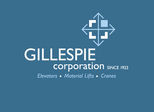- Glenn Siegel
- Dec 6, 2022
“There are eighty-eight keys on a piano and within that, an entire universe,” wrote pianist and writer James Rhodes. On Thursday, Friday and Saturday, Valley audiences heard three distinct points in the piano macrocosm, as Pioneer Valley Jazz Shares presented “A World of Piano” at the Arts Trust in Northampton. Lafayette Gilchrist (Nov. 17), Ron Stabinsky (Nov. 18) and Marilyn Crispell (Nov. 19) each gave breathtaking solo recitals, filled with intrepid improvisation at all levels of intensity and complexity.
“A World of Piano” was a revival of a series I first produced for the Northampton Center for the Arts in 1995 (Jaki Byard, Stanley Cowell, Paul Bley) and every year from 2003 to 2012. After a final concert by Dave Burrell in 2013, the Center lost their Old School Commons space and the series went dormant. Until now. Kelly Silliman, Program Director of NCA, was excited to partner with Jazz Shares to bring the series back to life, and so we began the further exploration of the piano-sphere.
I had known Lafayette Gilchrist primarily through his work with the great tenor saxophonist and bass clarinetist David Murray, with whom he has worked since the turn of the century. “He plucked me from obscurity,” Gilchrist told me. The long time Baltimore resident played with rhythmic assurance in multiple styles, much of it imbued with the blues. His playing brought to mind Jaki Byard and Dave Burrell, two expansive pianists who draw from the entire history of jazz. I loved his tendency to play a phrase then stop for a split second, adding drama and giving our ears a chance to catch up. It made me think of Artur Schnabel’s words, “The notes I handle no better than many pianists. But the pauses between the notes – ah, that is where the art resides!” His program of originals was full of ear catching melody drawn from the piano lineage. Gilchrist is a beautiful soul, open and easy, and he made lots of friends on his first tour through New England, which also included stops in Boston and Portland, Maine. Thanks to jazz protector Ann Braithwaite for her help in organizing his visit.
Ron Stabinsky, unfamiliar to the vast majority of concertgoers, is best known in the jazz world for his work with avant-garde trumpeter Peter Evans and Moppa Elliot’s ensemble, Mostly Other People Do the Killing. For the past four years, he has been a member of the influential rock band the Meat Puppets, and is one of the most in-demand classical pianists in central Pennsylvania. Stabinsky, who possesses enormous technical skill and plays convincingly in many genres, is a charming and disarming music nerd. From the stage, he told us he was going to improvise like he does at home, and not like he is performing for an audience. He seemed to be able to play whatever was in his head, which was by turns, florid, eruptive, swinging and emotive. His work straddled contemporary music, romantic-period classical, blues, swing and other styles. He ended the program by playing two of his favorites: Horace Silver’s “Peace” and Thelonious Monk’s “Introspection”. Stabinsky is a long-time fan of “A World of Piano”, having made the four-hour trip from his home near Scranton to see pianists Matthew Shipp, Cooper Moore and Dave Burrell, along with his Northampton friend, Dick Moulding. “I really can’t put into words how deeply I enjoyed playing on this reintroduction of my favorite piano series,” Stabinsky wrote. Even though his visit was short, (he returned home after the show for an early Puccini rehearsal), the chance to meet his partner Mary, and his friend Doug, gave us a chance to get some insight into a really nice, very talented individual.
Marilyn Crispell is also a fan of the piano series. She played it in 2004, and for the last two years she’s been a dues-paying member of Jazz Shares. Her protean talent was on display at 33 Hawley St., as she wowed a crowd of 75 with her piano explosions. Shareholder Ron Freshley told me he felt the vibrations through his chair. But there were also periods of aching beauty, reinforcing Frederick Chopin’s insight that, “After one has played a vast quantity of notes and more notes, it is simplicity that emerges as the crowning reward of art.” Her improvisations seemed fully formed, as coherent as any written music, with ideas coming in torrents. Crispell is a self-effacing person. Her hair, like that of her upstate New York neighbor Carla Bley, obscured her face while she played. Her preference to angle the piano and lower the stage lights, emphasized her modesty. When Jazz Shares live streamed her trio, Dreamstruck in October, 2020, she insisted the cameras focus on her hands. Long-time Jazz Shares member Julie Orfirer’s solution to the lack of “face time”: “I just closed my eyes and followed the paths.”I love that Crispell’s demure on stage demeanor sits so comfortably with her loud, disruptive playing. Priscilla Page and I are so happy to call her a friend.
Gilchrist and Crispell stayed at chez Siegel/Page, and Jazz Shares board members Nancy Goldstein and Marta Ostapuik had the musicians in their homes for delicious pre-concert meals. We are western Mass. ambassadors, ensuring our region remains a welcoming place for cutting edge creative musicians, and their music. Three concerts in three days gave us a needed boost of piano bliss, which we hope to continue annually.



























